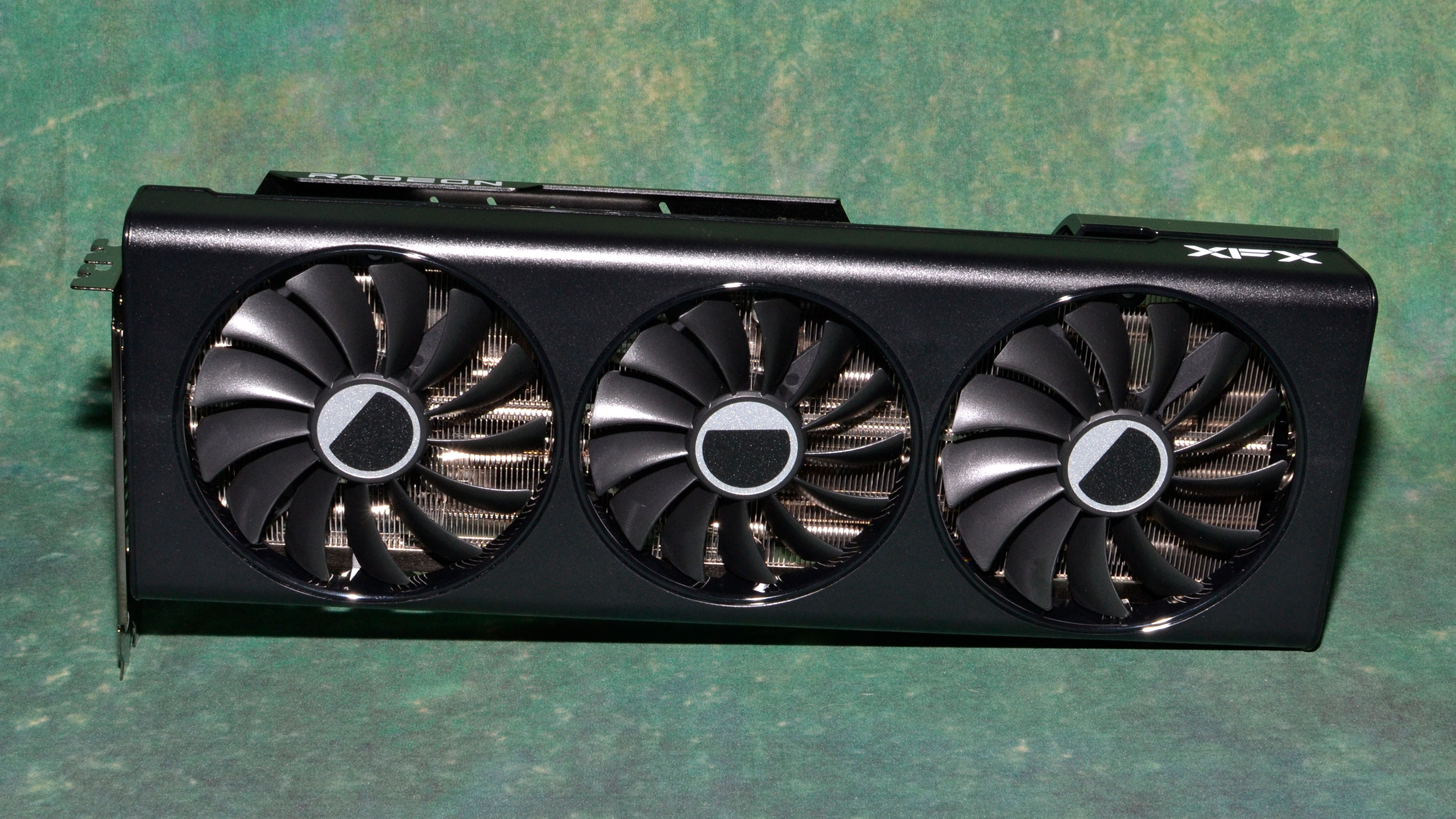Why you can trust Tom's Hardware
AMD says the RX 7700 XT targets 1440p gaming, so that's where we'll start. It does have 12GB of memory and a 192-bit interface, but it's also going to be less capable than the 7800 XT, so there will be games where 1440p and maxed-out settings prove a bit too much, particularly in ray tracing games.
Our current test regimen gives us a global view of performance using the geometric mean of all 15 games in our test suite, including both the ray tracing and rasterization test suites. Then we've got separate charts for the rasterization and ray tracing suites, plus charts for the individual games. If you don't like the "overall performance" chart, the other two are the same view we've previously presented.
Our test suite is intentionally heavier on ray tracing games than what you might normally encounter. That's largely because ray tracing games tend to be the most demanding options, so if a new card can handle ray tracing reasonably well, it should do just fine with less demanding games. Ray tracing also feels increasingly like something we can expect to run well when optimized properly. Mainstream and certainly high-end graphics cards need to be capable of running demanding settings, including ray tracing, at reasonable frame rates.
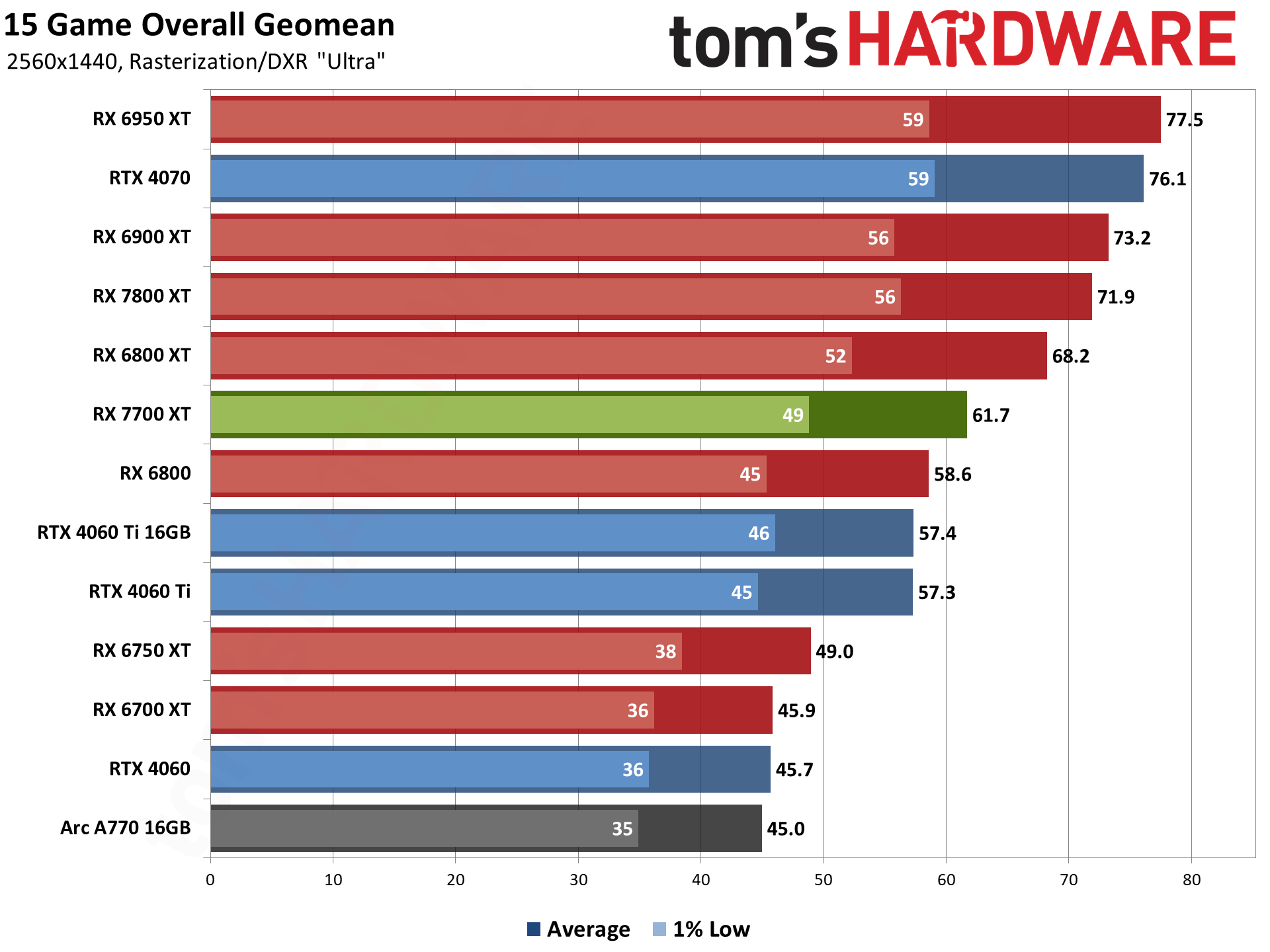
The overall performance at 1440p ultra sets the stage for what we'll see repeated again and again. It's like a modern dance recital for GPUs! The RX 7700 XT comes in a bit ahead of the existing RX 6800 but behind the RX 6800 XT. It's a relatively large generational improvement over the RX 6700 XT — 35% faster overall — but it also costs 36% more money based on current prices.
Like the other RDNA 3 GPUs, we're mostly looking at a sideways and slightly upward movement in gaming performance, with a slight price increase as well. The problem is that almost every new GPU from AMD and Nvidia for this generation feels like the model name got bumped one notch higher than it should have been.
If we take the RX 6900 XT as an example, AMD improved performance by 40–50 percent (at 1440p and 4K) with the 7900 XTX. The 7700 XT delivers about 55% more performance than the RX 6700 10GB. If AMD dropped the XT suffix and dropped the price below $400, then we'd have something to get excited about.
AMD does beat the RTX 4060 Ti, but again, it's at a price premium (unless you count the 16GB card). Paying 13% more for 8% more performance while not factoring in DLSS and AI or the higher power requirements just doesn't make for a compelling argument in favor of the RX 7700 XT. It's not bad, but neither is it great.
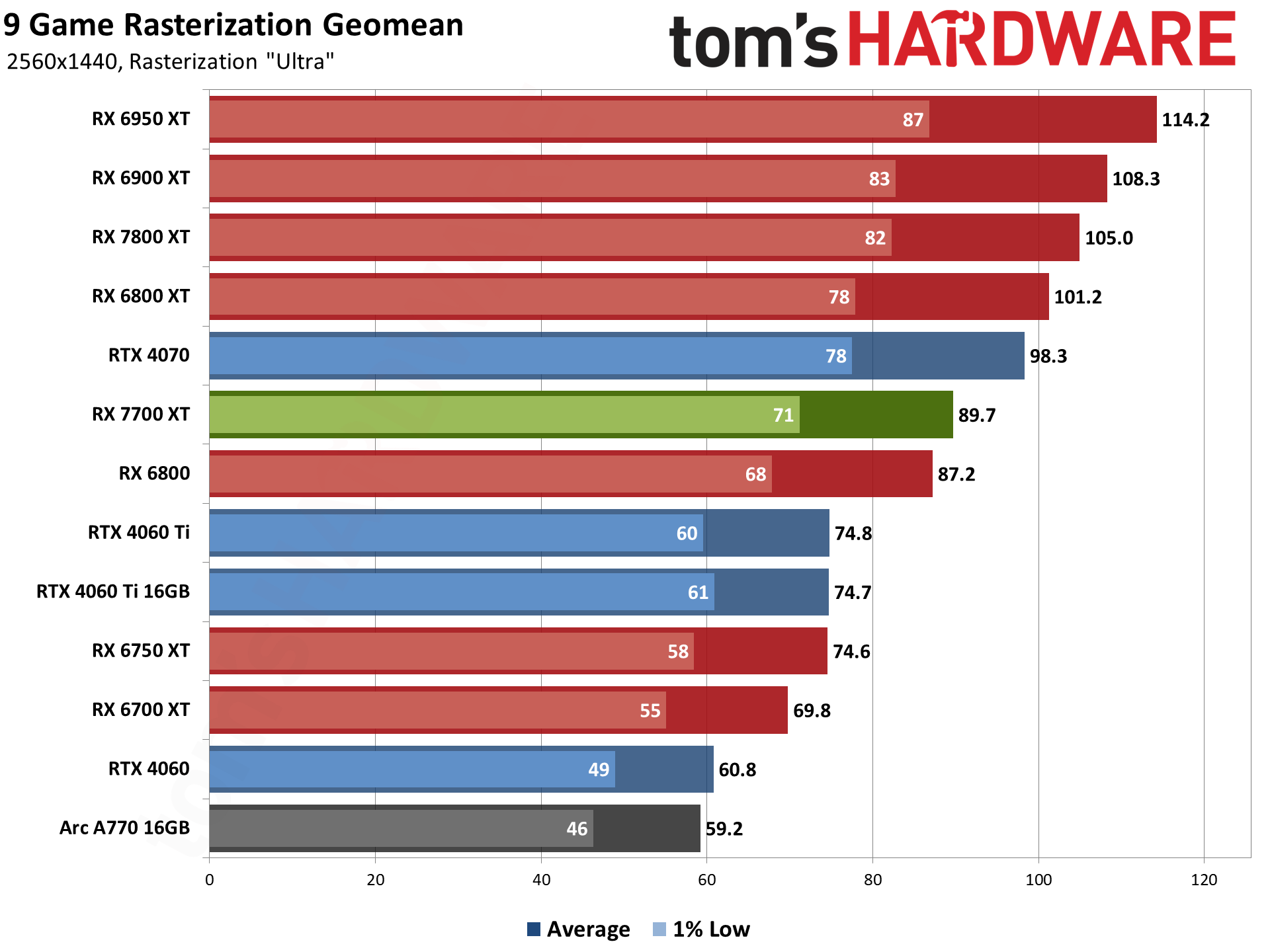
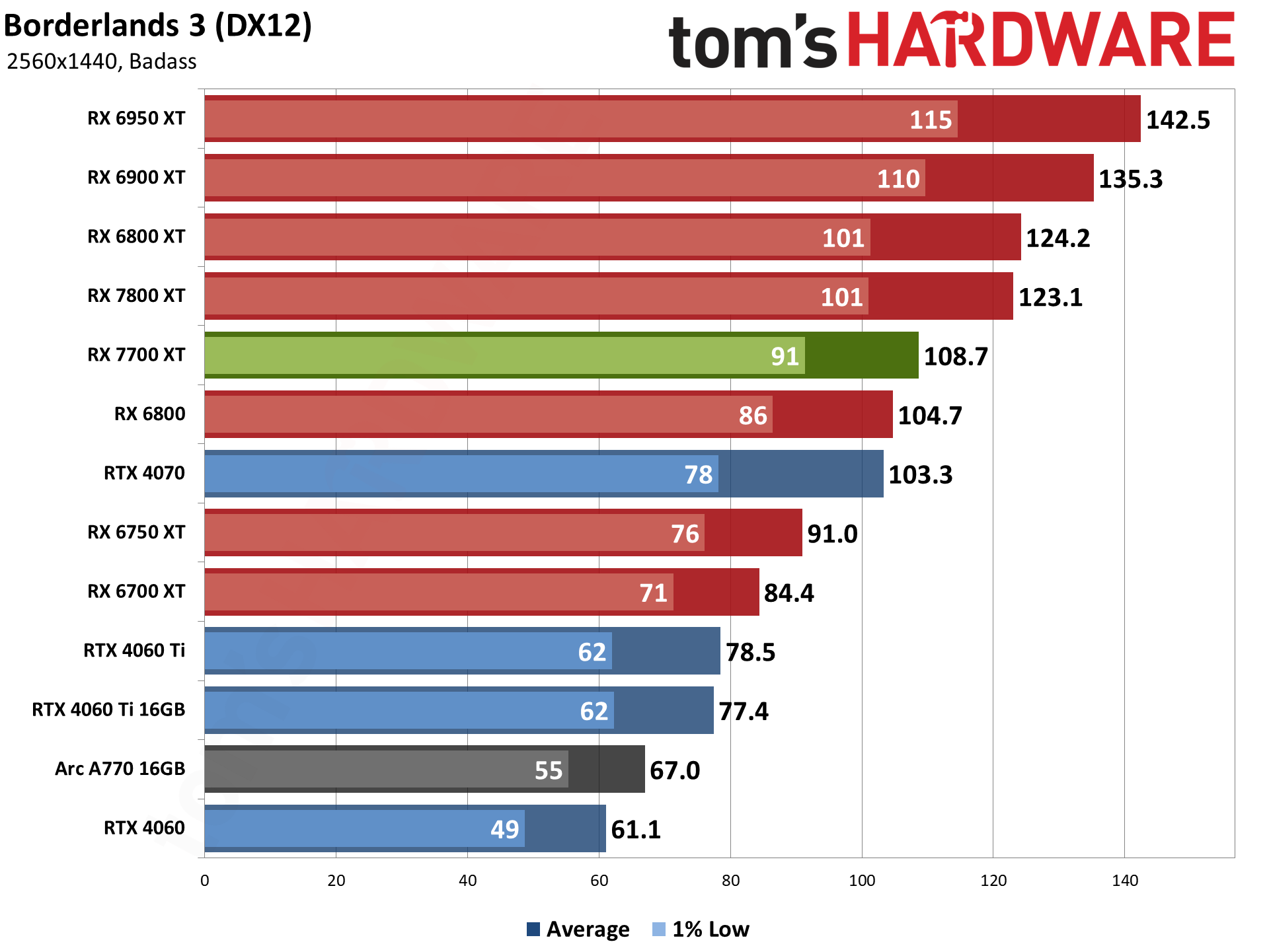

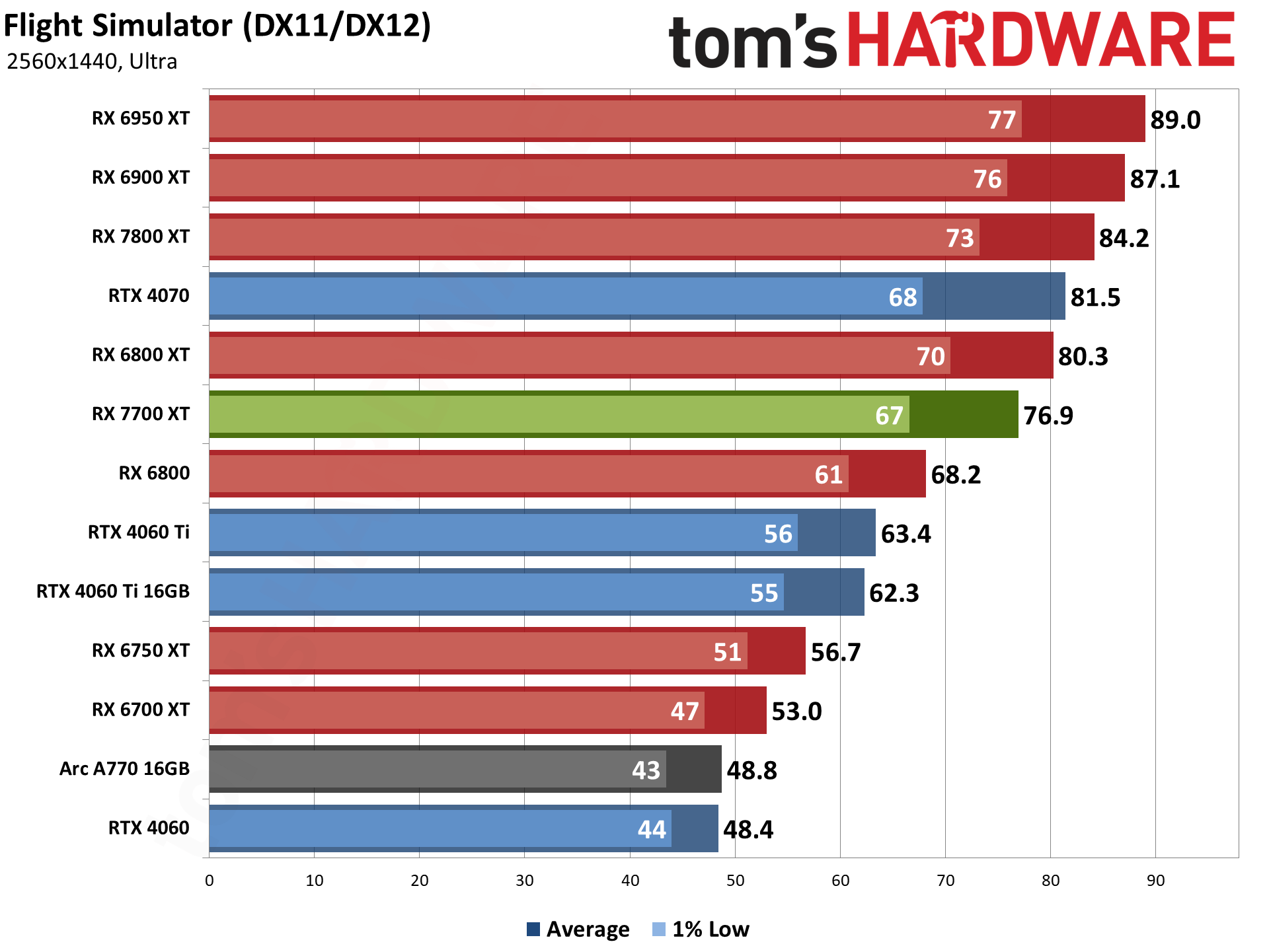
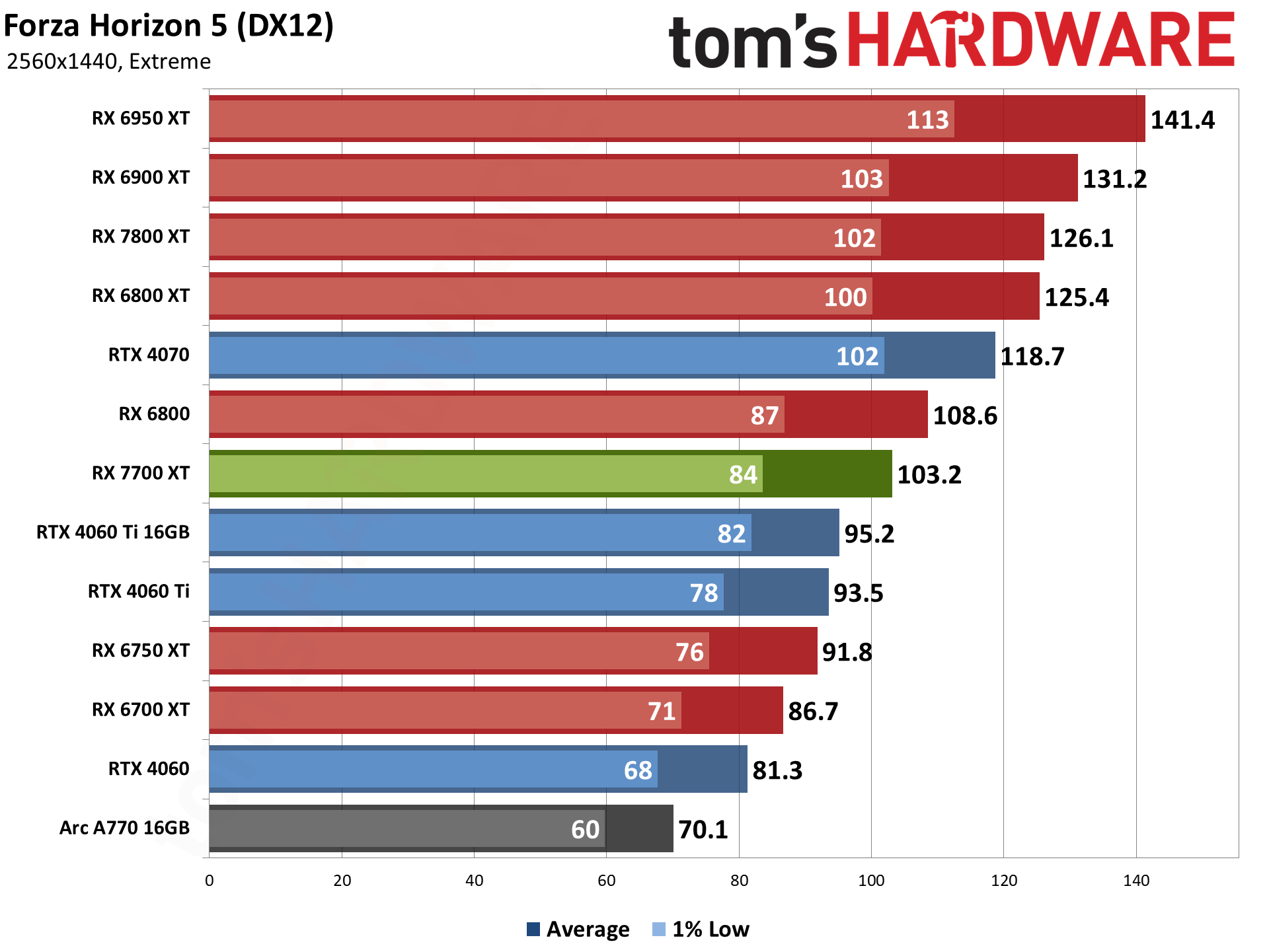
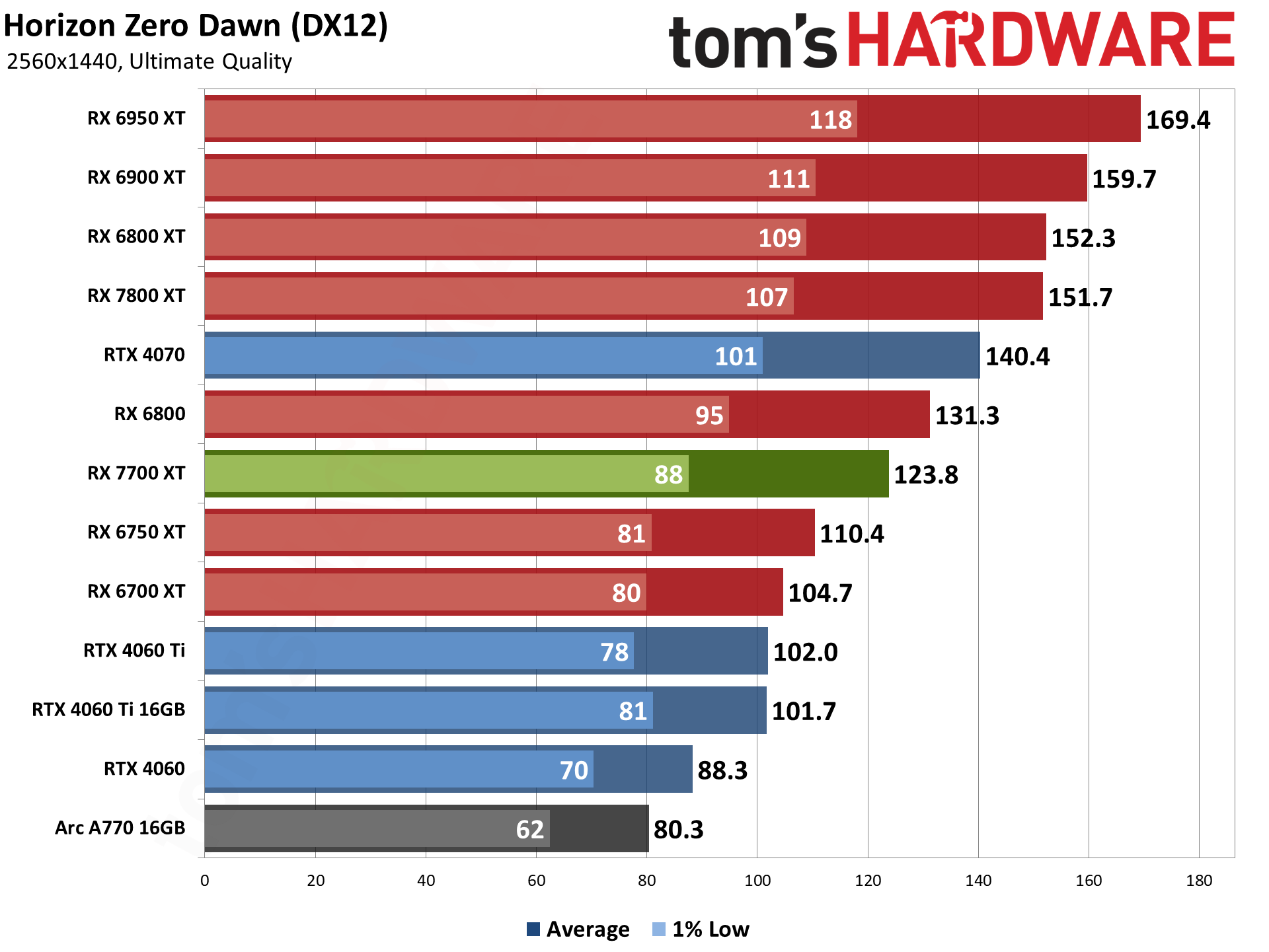
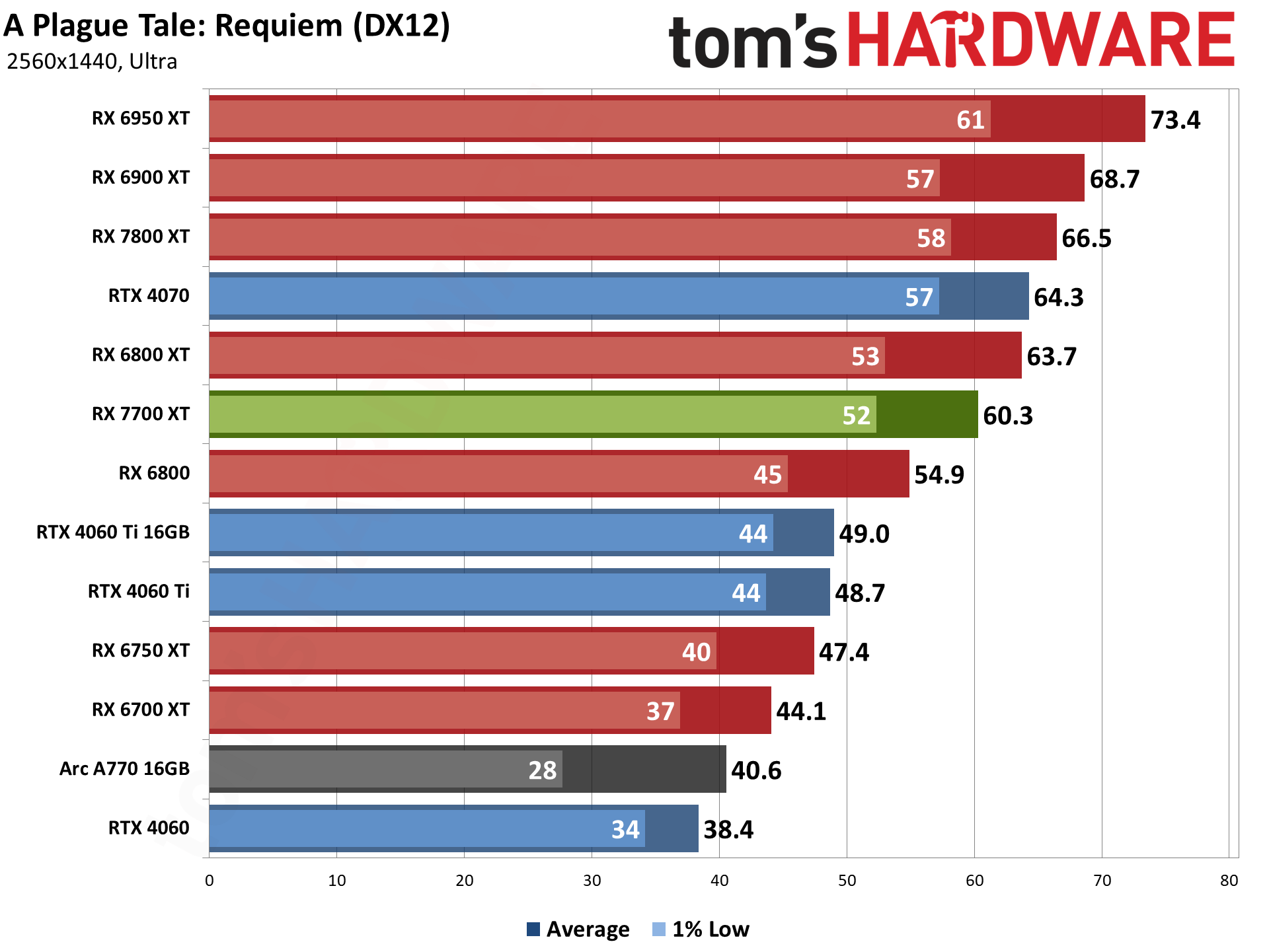
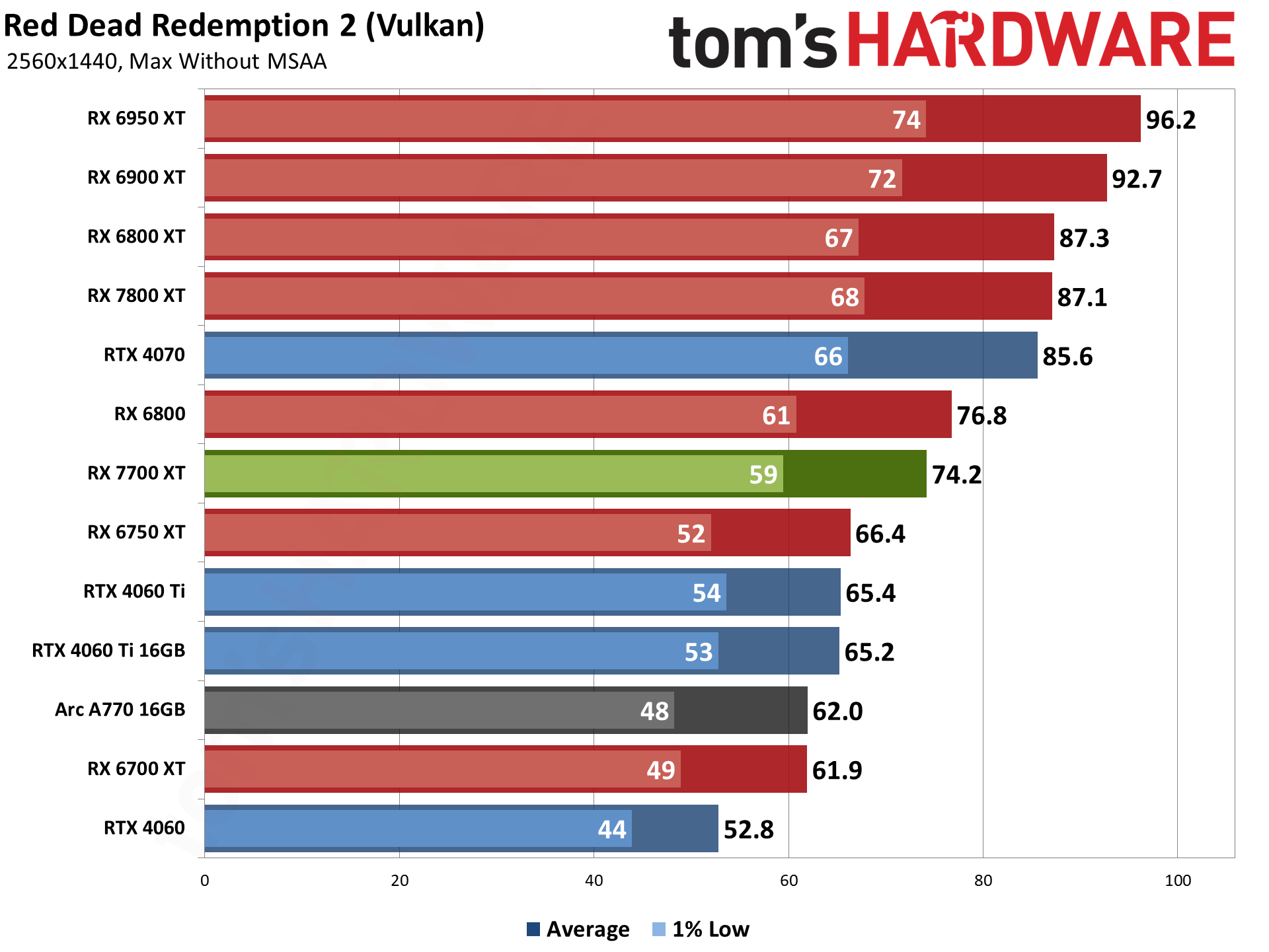
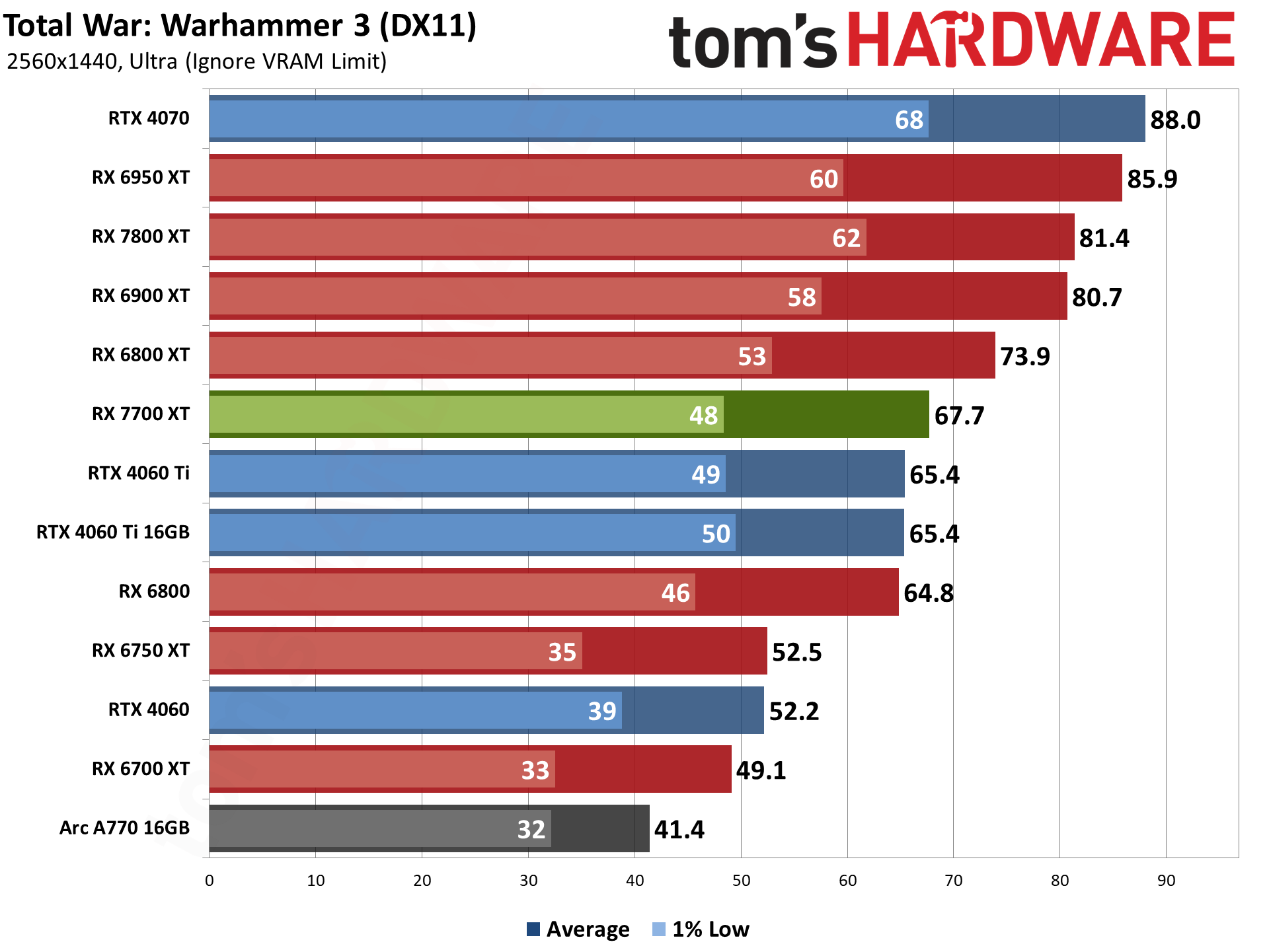
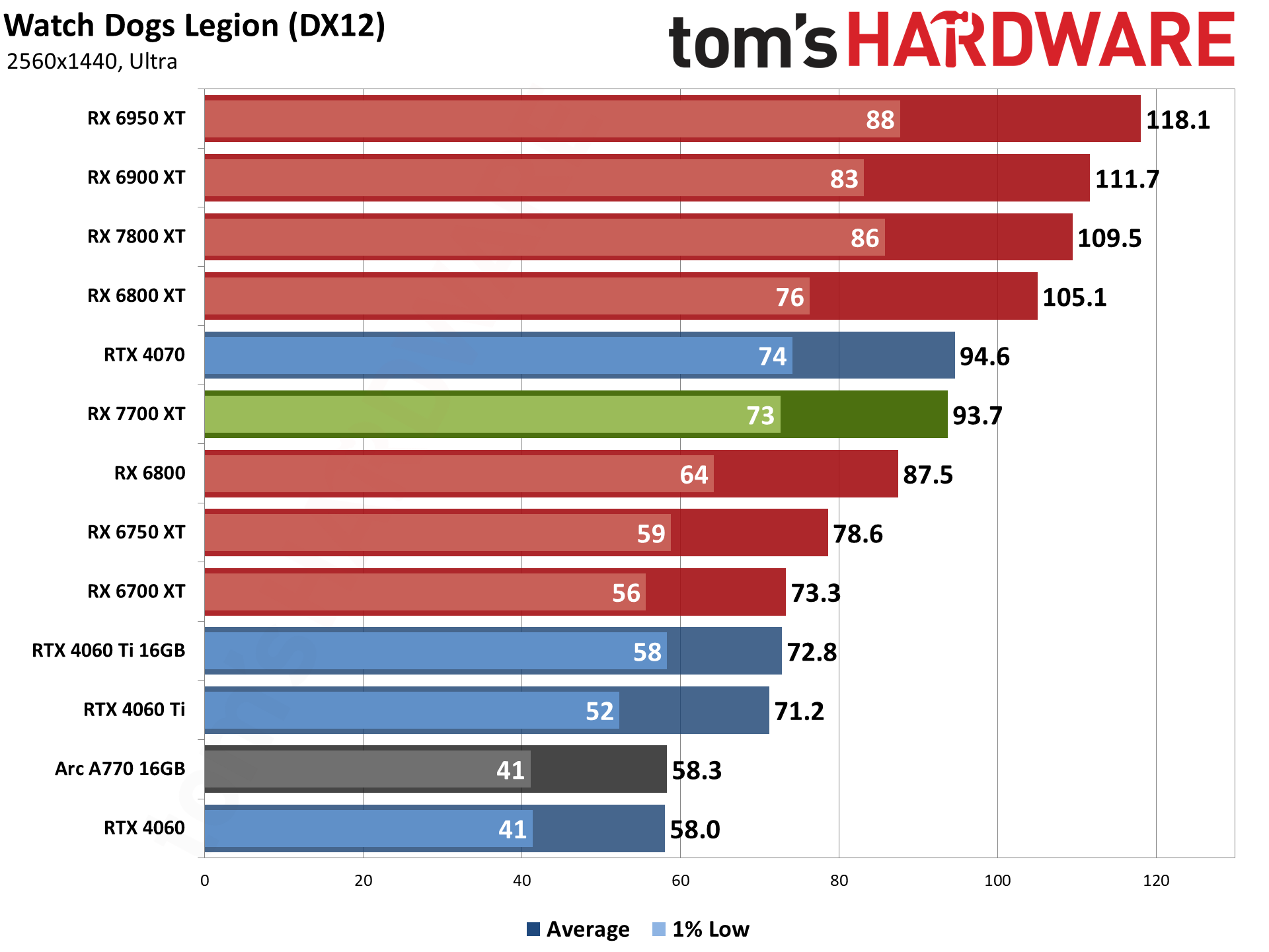
If you toss out the ray tracing games and look just at rasterization performance, things do tilt quite a bit in AMD's favor. The RX 7700 XT beats the 4060 Ti by 20%, and it's less likely to hit VRAM limits thanks to having 12GB. AMD's newcomer sweeps the charts, leading by anywhere from 4% in Total War: Warhammer 3 to as much as 38% in Borderlands 3.
By the same token, the 7700 XT only leads the RX 6800 by 3% (a range of -5% to + 13%), and the two are effectively tied. Plus, you get the extra VRAM and bandwidth on the 6800. Scoring a victory over Nvidia while tying your existing part just doesn't give anyone much reason to get excited.
More critically, the RX 7800 XT offers 17% more performance for 11% more money. Unless the price changes for one or both Navi 32 GPUs, that's the better pick.
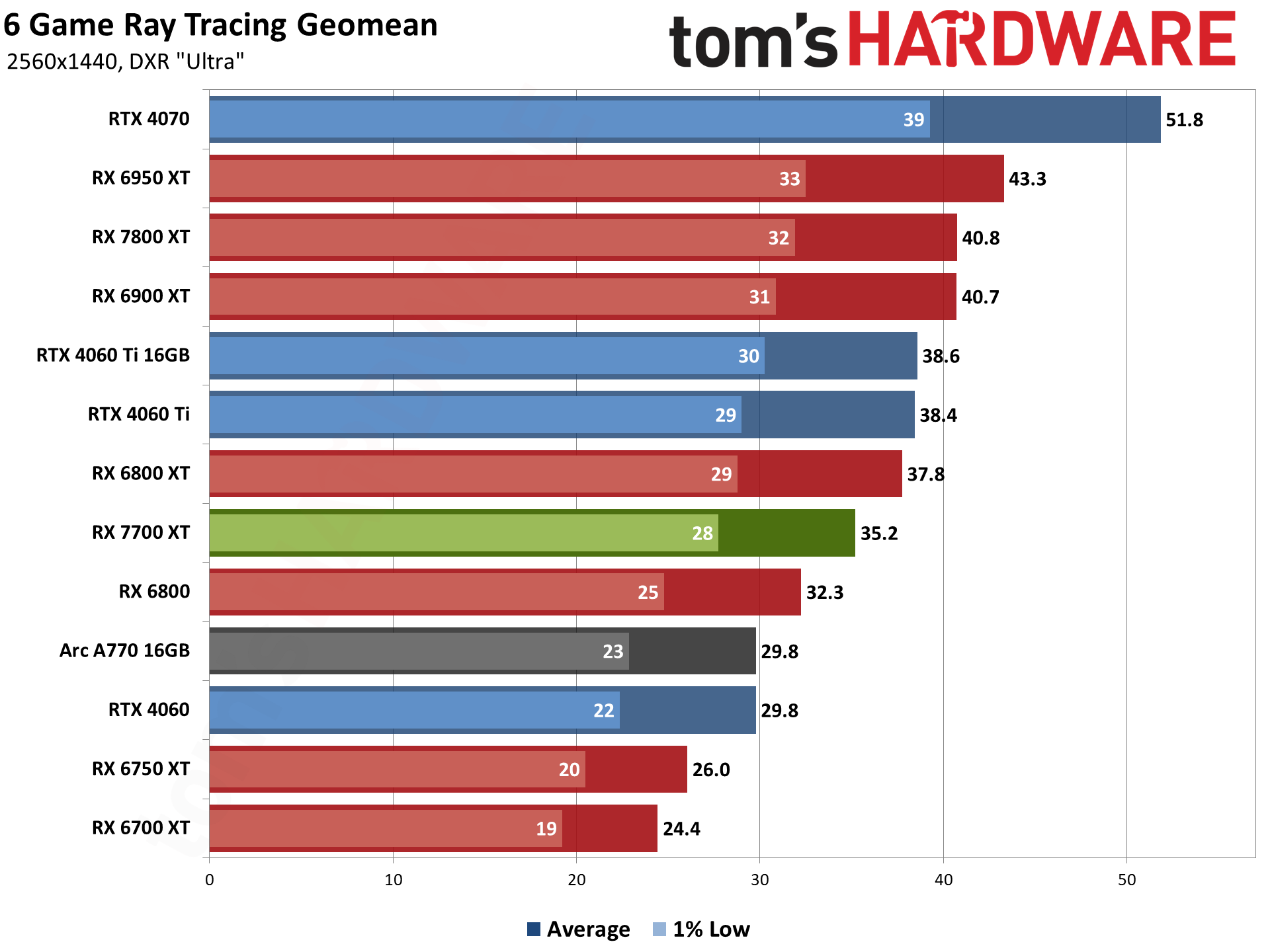
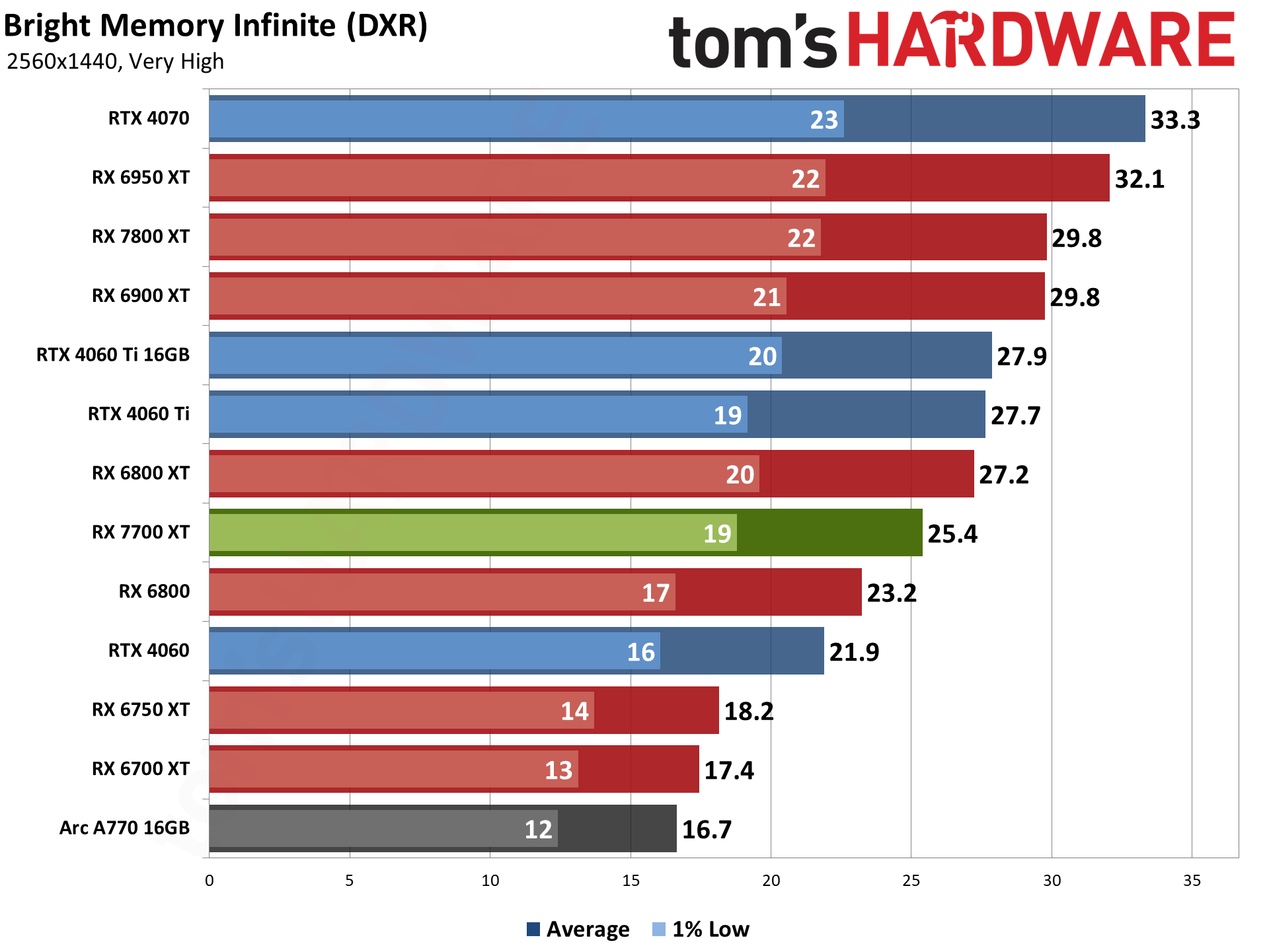
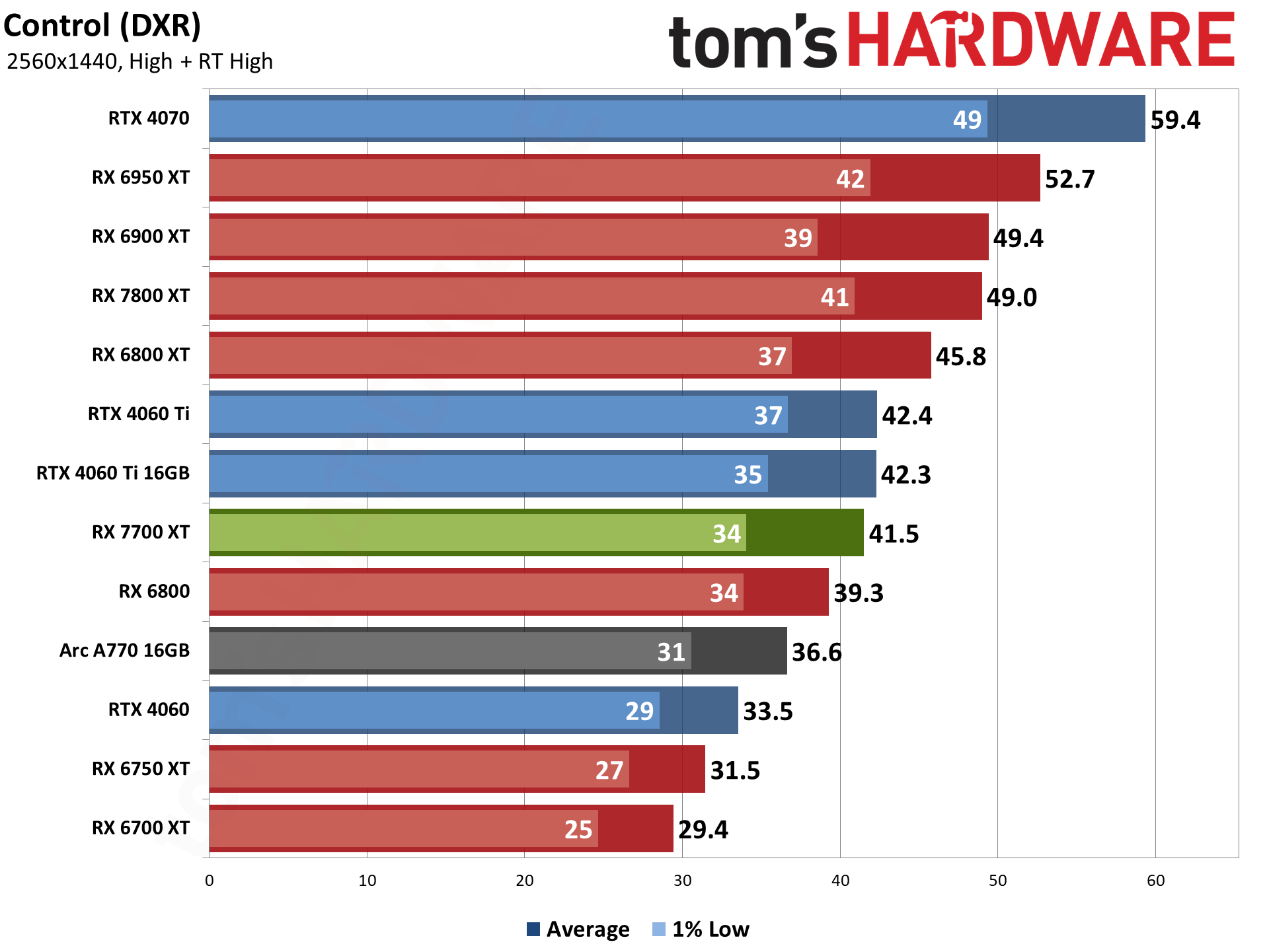
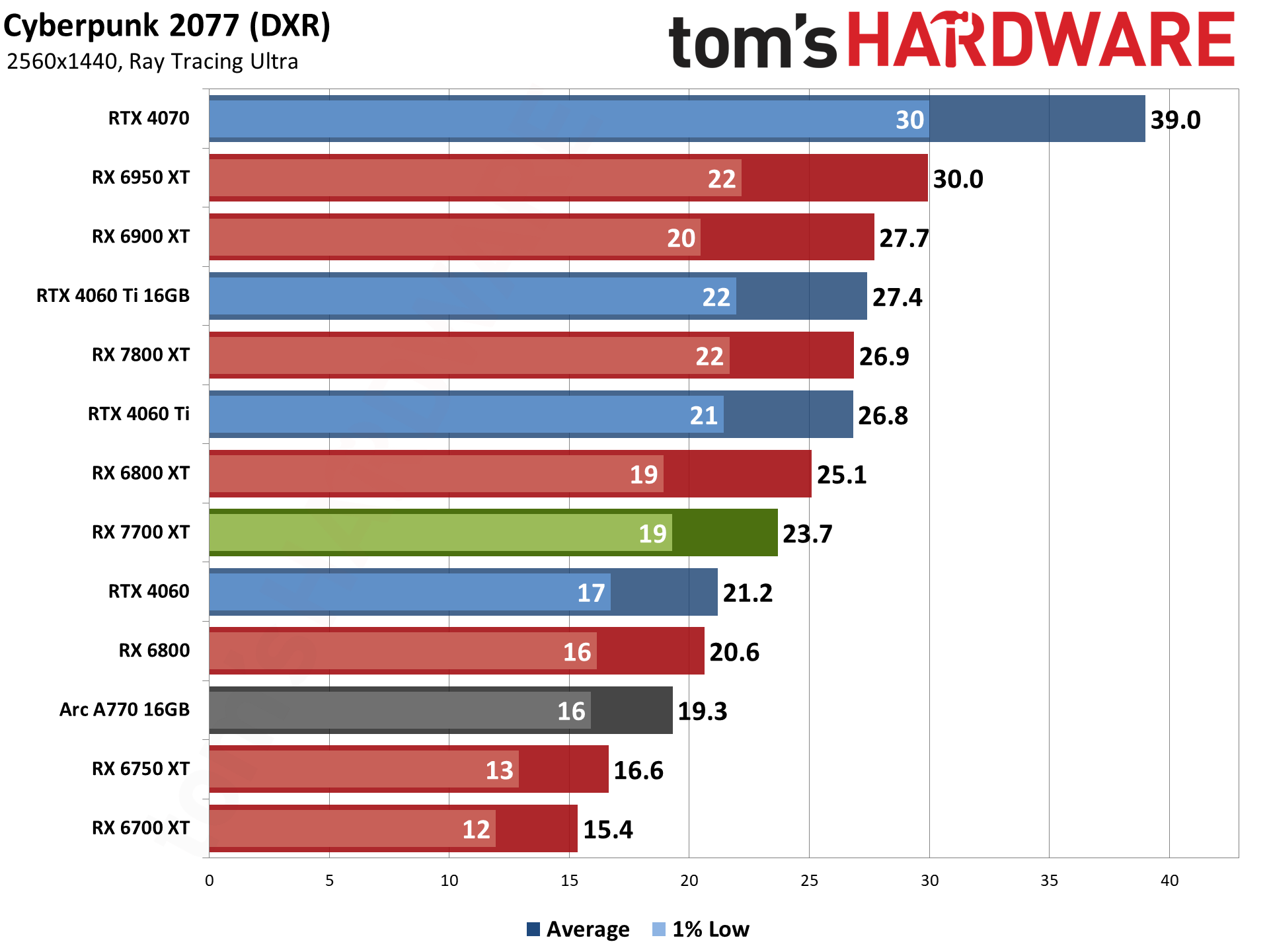
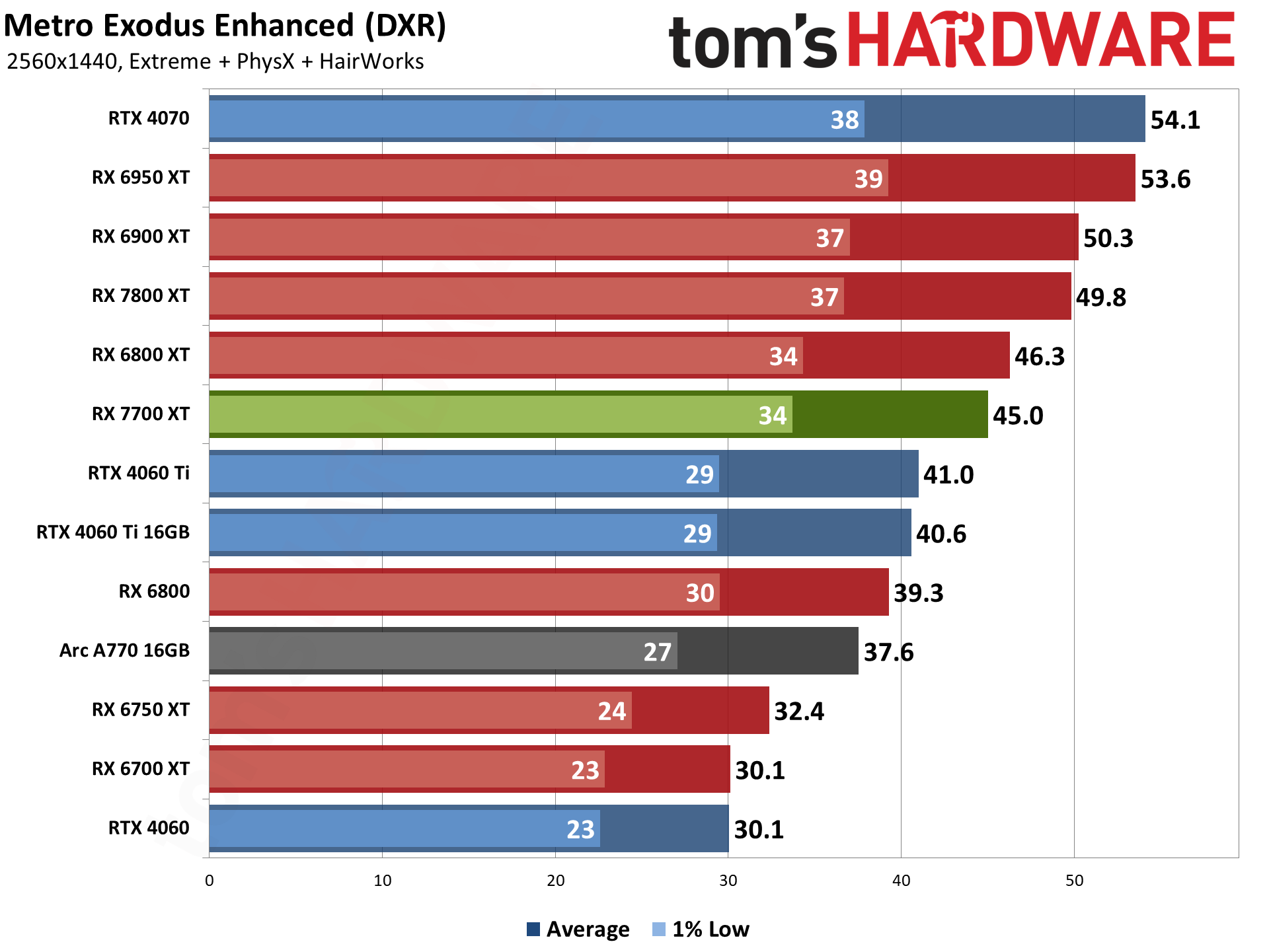
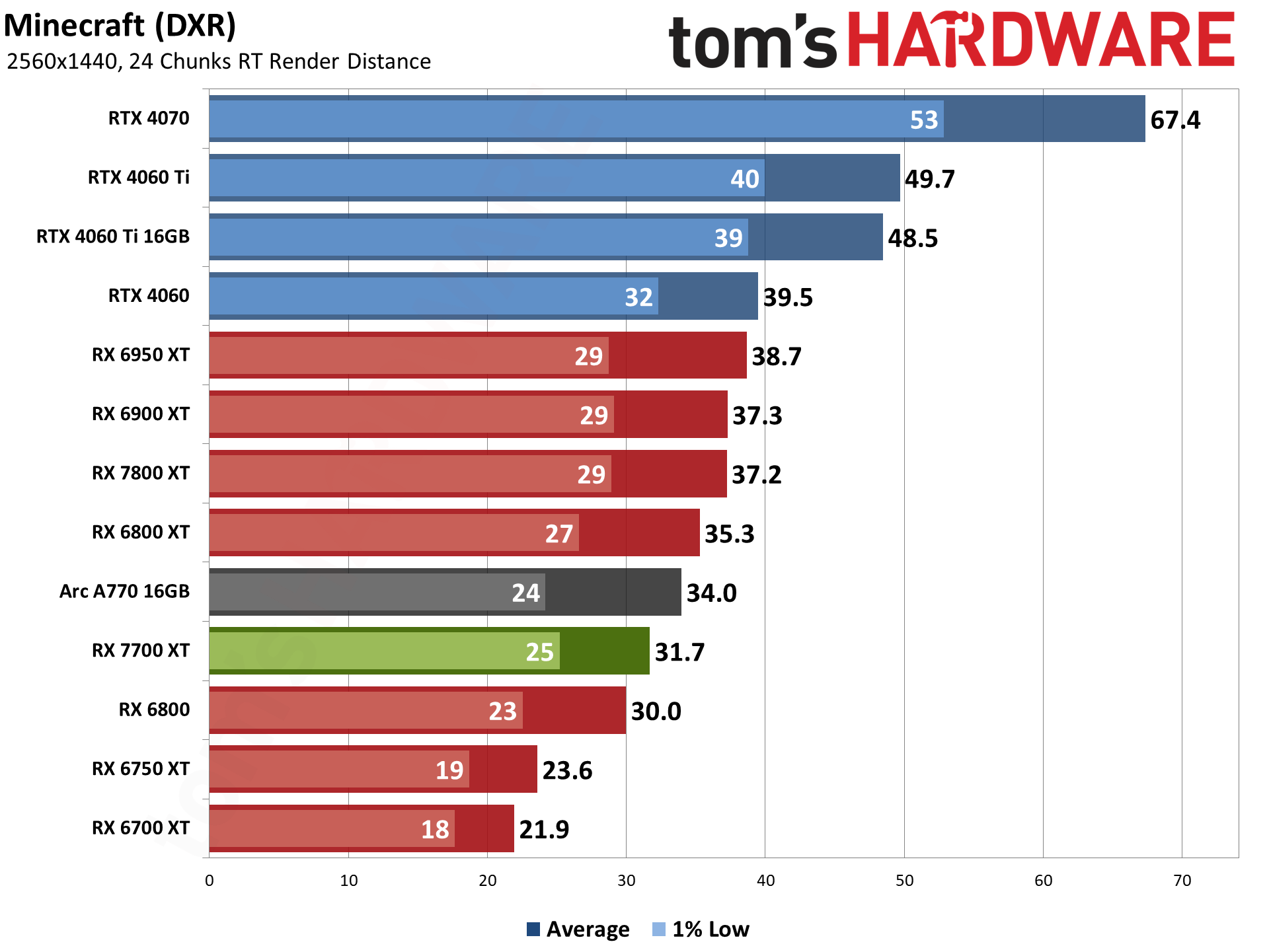
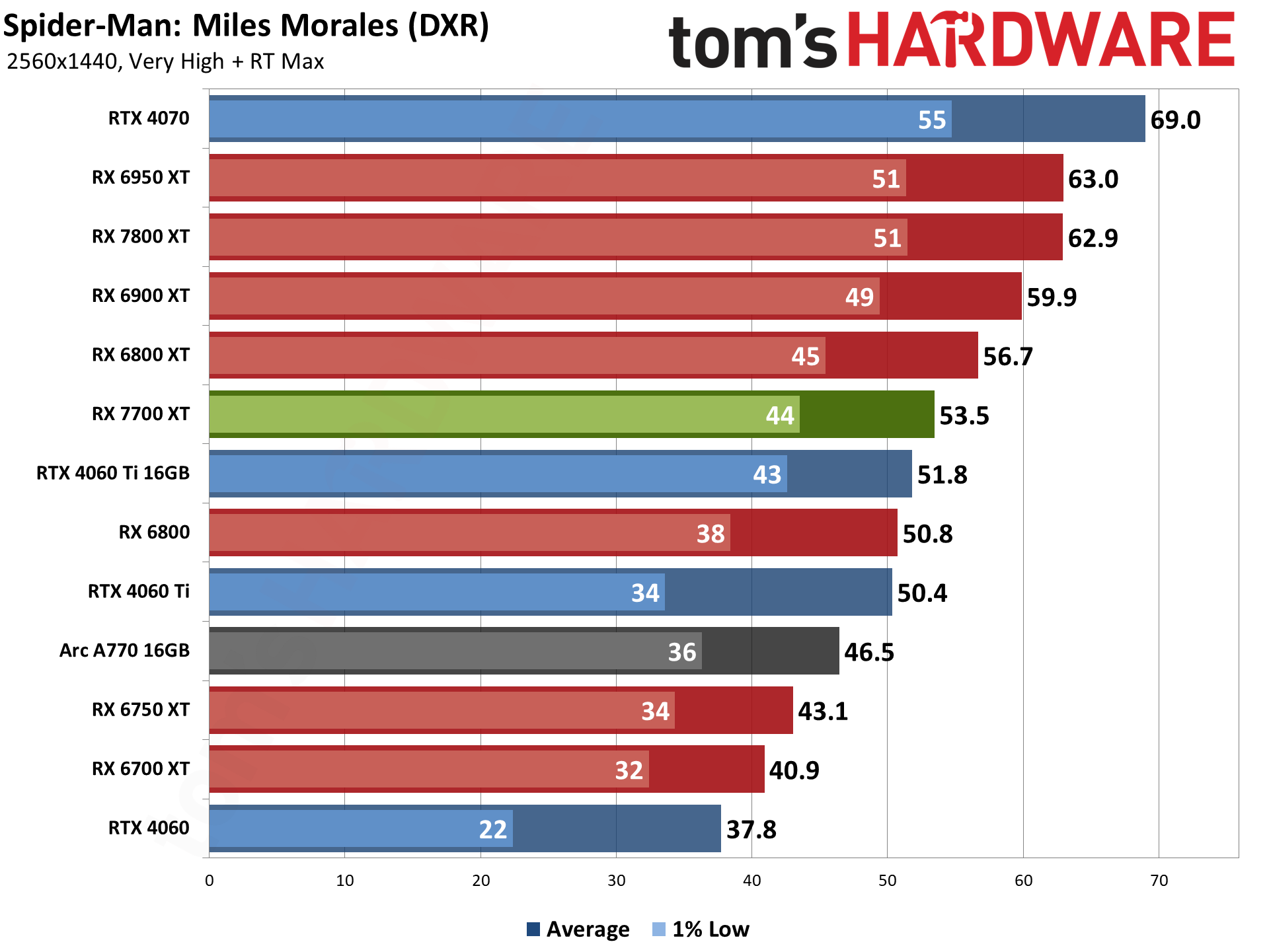
Ray tracing skews performance the other way, and now the RTX 4060 Ti offers 9% more performance overall. It's not a clean sweep, though, as AMD still offers slightly higher performance (without DLSS or FSR 2) in Spider-Man: Miles Morales and Metro Exodus Enhanced. Minecraft, as usual, heavily favors Nvidia, to the tune of 57%, and we'd probably see a similarly wide margin in Cyberpunk with RT Overdrive mode.
Plenty of gamers will argue that ray tracing so far hasn't proved to be a killer feature. They're not wrong. But when was the last time we actually saw any new graphics feature that radically improved image fidelity? It's been incremental improvements with often disproportionately large performance hits for at least the past decade in my book.
And while I'm here banging on my drum, let's note again that the 7800 XT offers 16% higher performance in ray tracing games at 1440p, for 11% more money. It used to be that graphics cards had diminishing returns — the GTX 980 cost 66% more than the GTX 970 back in the day while offering an average performance improvement of only 15–20 percent. The current situation of paying more to get proportionately more performance is definitely not typical in the GPU realm.
- MORE: Best Graphics Cards
- MORE: GPU Benchmarks and Hierarchy
- MORE: All Graphics Content
Get Tom's Hardware's best news and in-depth reviews, straight to your inbox.
Current page: Radeon RX 7700 XT: 1440p Ultra Gaming Performance
Prev Page XFX Radeon RX 7700 XT Card and Overclocking Next Page Radeon RX 7700 XT: 1080p Ultra Gaming Performance
Jarred Walton is a senior editor at Tom's Hardware focusing on everything GPU. He has been working as a tech journalist since 2004, writing for AnandTech, Maximum PC, and PC Gamer. From the first S3 Virge '3D decelerators' to today's GPUs, Jarred keeps up with all the latest graphics trends and is the one to ask about game performance.
